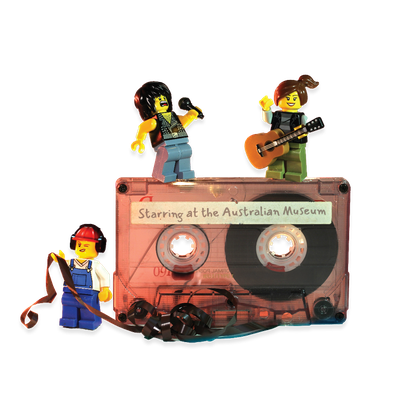Your search returned 30 results
By Page Type
By Tag
- All
- fish (966)
- blog (696)
- fishes of sydney harbour (401)
- First Nations (299)
- Blog (236)
- AMRI (169)
- archives (164)
- Eureka Prizes (146)
- Aboriginal and Torres Strait Islander (135)
- insect (126)
- Ichthyology (124)
- geoscience (109)
- minerals (102)
- climate change (99)
- podcast (94)
- Fish (91)
- Anthropology (89)
- International collections (80)
- Minerals Gallery (78)
- wildlife of sydney (78)
- Labridae (77)
- frog (74)
- gemstone (70)
- photography (66)
- history (64)
- Mollusca (60)
- gem (59)
- staff (59)
- Birds (56)
- Gems (56)
- Indonesia (56)
- education (56)
- shark (55)
- AMplify (54)
- people (53)
- earth sciences (50)
- exhibition (50)
- past exhibitions (50)
- Gobiidae (48)
- sustainability (46)
- Pomacentridae (45)
- Serranidae (44)
- lifelong learning (42)
- science (42)
- Earth and Environmental Science (41)
- Syngnathidae (41)
- Ancient Egypt (40)
- Bali (40)
- bird (40)
- dangerous australians (40)
-
Fossils in Alcoota, NT
https://australian.museum/learn/australia-over-time/fossils/sites/alcoota/The grass-covered plains at Alcoota Station form a thin veneer over an enormous bed of fossil bones that are around eight million years old.
-
Fossils in Naracoorte, SA
https://australian.museum/learn/australia-over-time/fossils/sites/naracoorte/Pleistocene fossil vertebrate deposits of Victoria Fossil Cave at Naracoorte are considered to be Australia's largest and best preserved.
-
Fossils in Lightning Ridge, NSW
https://australian.museum/learn/australia-over-time/fossils/sites/lightning-ridge/Deposits at Lightning Ridge yield some of the rarest, most beautiful and precious fossils in the world.
-
Fossils in Bluff Downs, QLD
https://australian.museum/learn/australia-over-time/fossils/sites/bluff-downs/Bluff Downs is recognised to be one of the most significant fossil sites of Pliocene age in Australia.
-
How do fossils form?
https://australian.museum/learn/australia-over-time/fossils/how-do-fossils-form/For a plant or animal to become a fossil, a series of events must occur...
-
Ancient fossils from Australia’s Red Centre
https://australian.museum/learn/news/blog/ancient-fossils-from-australias-red-centre/Dr Patrick Smith's recent expedition to the Red Centre reveals a treasure trove of newly discovered fossils spanning more than 600 million years.
-
Fossils in Talbragar, NSW
https://australian.museum/learn/australia-over-time/fossils/sites/talbragar/Talbragar is a well-known fossil site in Australia and contains one of the most significant Jurassic terrestrial fossil deposits in Australia. It is also the only Jurassic fish site found in New South Wales.
-
Fossils in Murgon, QLD
https://australian.museum/learn/australia-over-time/fossils/sites/murgon/Murgon is significant as the only site in Australia that records a diverse vertebrate fauna dating from the early Tertiary Period (55 million years ago), approximately ten million years after the extinction of the dinosaurs.
-
Common Fossils of the Sydney Basin
https://australian.museum/learn/australia-over-time/fossils/sites/common-fossils-of-the-sydney-basin/The Sydney region, extending from Wollongong to Newcastle and Lithgow, is part of a large geological feature called the Sydney Basin.
-
Palaeontology
https://australian.museum/learn/collections/natural-science/palaeontology/Palaeontology is the study of fossils. Fossils are the remains or traces of prehistoric living things and are preserved in substances such as sediments, coal, tar, oil, amber or volcanic ash, or frozen in ice or naturally mummified.
-
Discover more
2025 Australian Geographic Nature Photographer of the Year
Special exhibition
Free entry
Now open -
Discover more
Unfinished Business
Special exhibition
Free entry
Now open -
Discover more
Wansolmoana
Permanent exhibition
Free entry
Open daily -
Find out more
Burra
Permanent kids learning space
Free entry
10am - 4.30pm![]()
-
Discover more
Minerals
Permanent exhibition
Free entry
Open daily![]()




